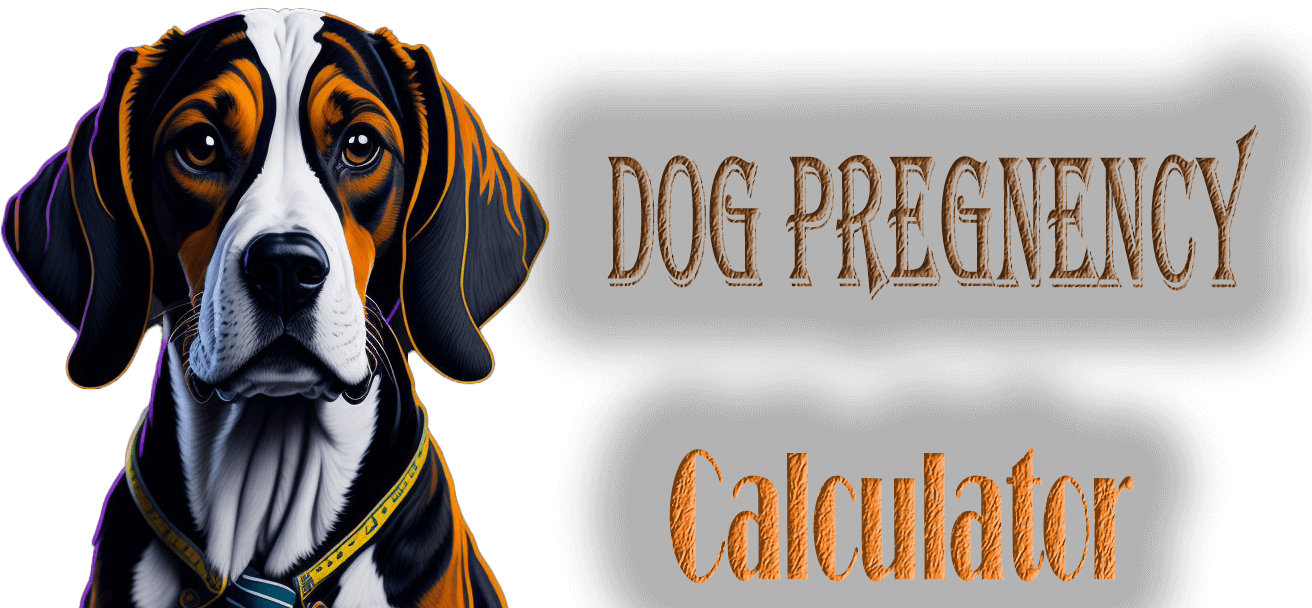Labrador Retriever Good tips about Pregnancy
Are you a proud owner of a Labrador Retriever and considering breeding your pet? Or perhaps you simply want to know what to anticipate when a pregnant Labrador Retriever? In either case, this article will give you a thorough overview of the procedure, symptoms, and important safety measures related to Labrador Retriever pregnancy.
Table of Contents
ToggleBreeding a Labrador Retriever can be a pleasant experience, but before starting the process, it’s crucial to comprehend the fundamental biology of dog pregnancy. The length of a Labrador Retriever pregnancy, how to tell whether your dog is expecting, and what to expect during the gestation period are all covered in this section.

What to anticipate throughout Gestation Period
A Labrador Retriever’s gestation is broken down into three stages: early, middle, and late. Owners may notice lethargy, vomiting, and decreased appetite in the early stages. The dog’s tummy will start to grow during the middle stage, and owners may feel fetal movement. Owners may notice increased nesting behavior, agitation, and the beginning of contractions in the late stage.
Total cycle as defined
The cycle contains 3 stages And the owner must follow specific procedures and products for their loving pets.
To find Exact date of Gestation go to Here

Precautions to Take During Labrador Retriever Pregnancy
To protect both the mother and the puppies’ health during a Labrador Retriever pregnancy, all necessary precautions must be taken. The significance of pre-pregnancy screening, healthy eating, exercise, and veterinarian care will all be covered in this section.
Pre-pregnancy Screening
It is essential to perform a pre-pregnancy exam on a Labrador Retriever before breeding it to make sure the dog is healthy and clear of any underlying medical issues. Exams of the hips, elbows, and eyes may be part of this screening, as well as genetic testing for prevalent breed-specific health problems.
Proper Nutrition
During pregnancy, a Labrador Retriever’s nutrition needs to be carefully examined and modified. Dogs who are pregnant need to eat a lot of calories, protein, and other necessary elements. Overfeeding, however, can result in excessive weight growth, which can harm the dog’s joints and general health. To make sure that your dog is getting the right amount of nourishment for her stage of pregnancy, speak with your veterinarian.
Exercise
A pregnant Labrador Retriever needs to exercise moderately since it can enhance circulation, muscular tone, and general wellness. Overtraining, however, can result in harm or weariness, which is bad for the mother and the puppies. For guidance on the right kind and amount of exercise during pregnancy, speak with your veterinarian.
Veterinary Care
Pregnancy in a Labrador Retriever requires regular veterinary care. Your dog’s veterinarian can keep an eye on their health, do regular checkups, and give advice on proper diet, exercise, and maintenance. In addition, your veterinarian can offer prenatal care, which includes blood tests, ultrasounds, and other crucial treatments to guarantee the mother’s and the puppies’ health.
Signs of Labor and Delivery/Signs of pregnancy in Labrador Retrievers
During the final stages of pregnancy, it is crucial to keep a watchful eye on your Labrador Retriever because labor symptoms can appear suddenly. We’ll talk about the indicators of labor and what to anticipate during delivery in this part.
Signs of Labor
The signs of labor in a Labrador Retriever include nesting behavior, restlessness, panting, loss of appetite, and a drop in body temperature. As labor progresses, the dog may begin to show signs of discomfort, such as pacing, vocalization, and excessive licking of the vulva.
Delivery
Both the mother and the owner may feel extreme stress during the delivery of a litter of puppies. It’s critical to provide the dog with a relaxed and comfortable environment and to keep a watchful eye out for any signs of distress or issues during delivery. Depending on the size of the litter and the particular dog, the delivery process can take anything from a few hours to several days.

What to feed a pregnant Labrador Retriever
A pregnant Labrador Retriever has to be fed a healthy, balanced diet that includes all the nutrients she needs for herself and her growing babies. Here are some suggestions for feeding a Labrador Retriever during pregnancy.
Increase the amount of food you give your dog
The Labrador Retriever will need more calories as her pregnancy advances to sustain her growing babies. Provide her with smaller, more frequent meals throughout the day as you gradually increase her caloric intake.
Select a top quality dog food
Select a top quality dog food that is especially prepared for dogs that are pregnant or nursing. High levels of protein, calcium, and other crucial nutrients are needed for a fetus’s proper development.
Avoid overfeeding
Even while it’s important to eat more during pregnancy, overeating might result in obesity, which can complicate delivery. It’s crucial to keep an eye on the dog’s weight and alter her food consumption as necessary.
Offer supplements
If your pregnant dog needs any vitamins or supplements, ask your veterinarian. Your veterinarian may suggest supplements to make sure your dog is getting enough calcium and folic acid since these minerals are crucial for embryonic development.
Provide plenty of water
Make sure your Labrador Retriever is pregnant always has access to clean, fresh water. During pregnancy, dehydration can result in difficulties.
Labrador Retriever miscarriage
Several factors, like as genetic defects, hormone imbalances, infections, or physical trauma, might cause a miscarriage in a Labrador Retriever. Loss of appetite, sluggishness, vaginal discharge, and discomfort in the abdomen are all potential indicators of miscarriage in Labrador Retrievers. You should seek veterinarian assistance right once if you think your dog may have miscarried.
Caring for the Mother and Puppies
To ensure the health and wellbeing of the mother and the puppies after delivery, it is essential to give them the right care. We will talk about the postpartum period’s need for care and safety in this section.
Postpartum Care for the Mother
The postpartum phase will call for the mother to have enough of rest and nourishment. She must be carefully watched for any indications of distress or problems, such severe bleeding or fever. Additionally, the mother will need a spotless, cozy environment to care for and nurse her puppies.
Postpartum Care for the Puppies
Puppies that have just been born need care and attention constantly. It’s crucial to make sure the puppies are getting regular meals, growing, and being warm and clean. To maintain their health and wellbeing, the puppies will also need routine veterinarian exams and vaccines.
Frequently Asked Questions
A pregnant Labrador Retriever needs to exercise to be healthy, but it’s important to make sure that the routine is safe and appropriate for the dog’s stage of pregnancy.
Take short walks
Avoid strenuous exercise
Provide plenty of breaks
Avoid hot temperatures
Consider swimming
A Labrador Retriever birth requires a number of preparations to guarantee a secure and comfortable delivery for the mother and her puppies. The following advice can help you get ready for a Labrador Retriever birth:
Make a whelping box: it should be spacious enough to comfortably fit the mother and her puppies. It ought to be positioned in a calm, pleasant environment and lined with nice, tidy bedding.
assemble your supplies: You’ll need a heating pad, a bulb syringe, clean cloths, scissors, dental floss, or other thread, for sucking mucous from the puppies’ mouths.
Prepare for veterinary care: It’s critical to have a veterinarian’s contact information on hand in case there are any delivery-related issues.
Monitor the mother’s temperature: Take the mother’s temperature multiple times per day as the delivery date draws near. A reduction in temperature could be a sign that labor is about to start.
In order to ensure the health of her puppies, the mother needs to eat a high-quality diet. To choose the right food and feeding plan, speak with your veterinarian.
In Labrador Retrievers and other dog breeds, a pseudopregnancy, often known as a false pregnancy, can happen. In spite of not being pregnant, the dog exhibits symptoms of pregnancy like increased mammary glands and nesting tendencies.
It usually resolves on its own with in few weeks but here are few thing the owner can do.
Create a relaxing and stress-free atmosphere by giving the dog a peaceful place to rest.
Watch your dog’s food intake and make any required dietary changes.
The mammary glands should not be stimulated. Avoid touching or stroking the mammary glands as this can increase milk production.
To rule out any underlying medical concerns, seek veterinarian care if the symptoms worsen or continue to persist.
Here are few tips:
Create a clean and secure environment for the puppies. Puppies require certain conditions in order to grow and thrive. Keep their sleeping area spotless and risk-free.
Vaccinate and deworm: To determine the proper vaccination and deworming plan for your puppies, speak with your veterinarian.
Ensure sufficient nutrition: Puppies need a healthy diet to promote their development and growth. Feed them premium puppy food that has been suggested by your vet, and make sure they always have access to fresh water.
Socialize and train: To keep your puppies from growing up to be scared or hostile, socialize them with other dogs and people. Start their fundamental instruction at a young age to instill excellent behavior.
Provide play and exercise: Puppies need regular play and exercise to stay healthy and happy. Give them a lot of toys to play with and take them on brief walks.
Regular grooming is necessary to keep your puppies clean and in good health. Regularly clip their nails and brush their coats.
Puppies are prone to disease, so keep an eye out for any symptoms like lethargy, loss of appetite, or diarrhea. Consult your veterinarian right away if you experience any symptoms.
If the mother is unable to nurse or cannot produce enough milk, it may be essential to bottle-feed Labrador Retriever puppies. The following advice will help you bottle-feed Labrador Retriever puppies:
Pick the appropriate formula: Select a premium puppy formula that is created especially for young puppies.
Choose an appropriate bottle: Choose a bottle with a small nipple that the puppies can easily fit into their mouths.
Prepare the equation: To prepare the formula, follow the directions on the bottle.
The formula is warmed: By soaking the bottle in a bowl of warm water for a short while, you can reheat the formula to body temperature.
Place the puppies where: The puppies should be lying on their tummies with their heads slightly raised.
Feed the puppies by placing the bottle’s nipple in their mouths and letting them suckle. To prevent choking, support their head and neck.
After each feeding, softly touch the puppies’ backs while holding them upright to burp them.
After each feeding, wash the bottles with warm, soapy water, and then thoroughly rinse them.
Weeks 1-2: The fertilized eggs travel to the uterus for implantation after the sperm fertilizes the eggs in the fallopian tubes.
Week 3: The embryos start to take shape, and the dog’s nipples may start to show.
Week 4: The embryos begin to develop organs and limbs, and ultrasound can reveal the gender of the puppies.
Week 5: The puppies’ fur begins to develop, and x-rays show more detail in their skeletal systems.
Week 6: The puppies start to move around in the uterus and their eyes and ears start to form.
Week 7: The hair color and pattern of the puppies begins to show, and they begin to grow teeth.
Week 8: The organs and systems of the puppies mature, and the dog’s tummy may visibly enlarge.
Week 9: The puppies are fully developed, and the dog may begin to exhibit behaviors associated with nesting.
The timeline of Labrador Retriever can be based on Date and weeks depending on which specific timeline the owner is concerned:
To See it on base of date just calculate it by using dog pregnancy calculator
To view it on base of Week just read the pervious Answer
A Labrador Retriever’s pregnancy lasts, on average, 63 days, but it can last anywhere between 58 and 68 days. During the last few weeks of pregnancy, it’s crucial to keep a close eye on the dog and be ready for labor and delivery.
The behavior of a pregnant Labrador Retriever can vary rather frequently. Hormonal changes may result in mood swings, anxiety, and an increase in clinginess or irritability in the dog. In addition, bodily modifications like weight gain and discomfort might have an impact on a dog’s behavior.
Changes in appetite: Depending on the stage of pregnancy, the dog may have a decreased or increased appetite.
Enlarged nipples: In preparation for nursing puppies, the dog’s nipples will grow larger and more noticeable.
Nesting behavior: The dog may start looking for a cozy, safe location to give birth to her puppies and care for them.
Vomiting or nauseousness: Just like a pregnant human, a pregnant dog may experience some nauseousness or vomiting.
Lethargy or exhaustion: During pregnancy, the dog may look to be more exhausted than usual.
Increased urination: The growing puppies may put pressure on the bladder during pregnancy, causing the dog to need to urinate more frequently.
Abdomen enlargement: The dog’s abdomen will grow considerably larger as the pregnancy goes on.
